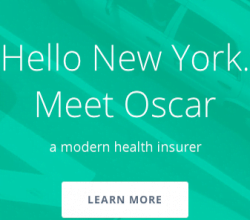The healthcare industry is evolving. This is nothing new. We hear it on the news everyday – from politicians battling over the Affordable Care Act, to innovative new healthcare products hitting the market such as Tripment.
Access to all of this healthcare information may seem overwhelming. But ignoring it is costing patients hundreds, if not thousands of dollars every year in unnecessary medical costs. Patients should push their healthcare providers to make this information available to them in an easy-to-use format; especially considering that the data is already public.
Telemedicine Offers a Clear Path to Medical Plan Cost Savings
The doctor is in…your smartphone app? It’s true, telemedicine is a practical alternative to visiting a doctor’s office. A huge percentage of doctor’s office visits are not necessary. Many ailments can be diagnosed remotely thanks to wearable healthcare technology that can remotely record vital signs, along with the built-in cameras on our smartphones.
Minimizing the number of in-person visits will reduce the number of personnel required to manage healthcare facilities. The data shows that nearly 60% of medical costs are related to labor costs. If patients will embrace this information and reduce the amount of personal care they require, without sacrificing quality of health, costs will fall.
Transparent Prescription Drug Cost Information Offers Immediate Savings
For immediate relief from healthcare costs, prescription drug cost databases help patients find less-costly sources of medicine, without delaying treatment or care. One fine example is Helprx. Individual drug manufacturers offer promotions or rebates to assist their clients with drug costs.
Helping patients access this information in a transparent way will help spur further competition between medicine producers, local pharmacies and online pharmacies. Keeping everyone in the supply-chain accountable for excessive markups is key here, and the power to do this is in the hands of patients thanks to transparent pricing data.

Transparent Healthcare Plans to Easily Compare Coverage Options
One of the hallmarks of the Affordable Care Act was the creation of the exchange – a system that allows insurers to offer their products to patients in a competitive, regulated marketplace. While it’s exciting that government subsidy information and general health plan data can be collected in a single place, it’s still difficult for patients to understand the minute differences between individual coverage options.
Thankfully, this information is available directly from health insurance providers. If a patient is considering a plan offered through the marketplace, don’t forget the step of visiting the actual plan provider’s website. Pick-up the phone and call / ask specific questions. The information is available, if you’re willing to put in the effort.
With new online healthcare platforms coming online in the private market, with similar features to the ACA marketplace, 2018 is looking like a banner year for health insurance coverage data transparency – making it easier than ever for patients to compare options and save money.
More and More Doctors are Publishing Their Pricing
Self-insured patients make-up a huge percentage of the US healthcare market, although they might not realize it. 94% of employers with more than 5,000 workers choose to self-insure their employees. This means that they set aside funds in a corporate account to pay cash for their employee’s healthcare needs – based on the specific underwriting of their customized health plan.
This gives employers access to huge amounts of data on their healthcare costs. This transparent data, anonymized by the HR department, can be analyzed to find where costs are bloated. In 2018, with advances in how medical data is being combed, we’ll see huge opportunities for companies to lower their healthcare costs – and this will translate to opportunities for the broader market to become more efficient and bring patient costs down.
In conclusion, there are three core ways transparent healthcare data will help patients in 2018. First, transparent reports can help patients understand the value of engaging with telemedicine platforms for minor outpatient needs. Second, prescription drug costs are easily accessible and competing companies can be engaged to lower out-of-pocket expenses, like copays and deductibles. And finally, corporations have more control over their healthcare data than ever before. This makes the entire system more accountable and efficient.








